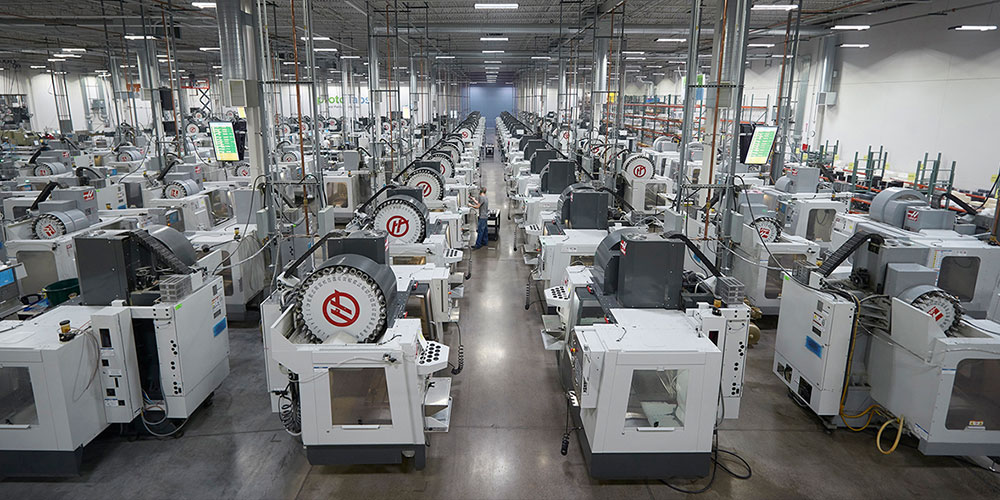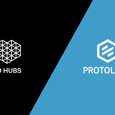Architecting a Manufacturing Framework for the Future

The world has faced a number of economic and humanitarian challenges over the past several years: pandemic, disrupted supply chains, trade tensions, war, and inflation. For leaders, it’s a complex and changing environment against which to design a strategy and plan for sustained growth.
As the market shifts in 2023, companies are developing products to adapt, which in turn affects how they work alongside their manufacturing suppliers. Each stakeholder—consumer, manufacturer, supplier—is connected to and influenced by the other. Today’s purchase decisions are driving the decisions made on the factory floor. So, to truly assess what's next for the manufacturing industry, you have to look at the evolving landscape in the marketplace and how companies are adjusting the way they develop products and work with suppliers.
The future, for me, is rooted in a new digital manufacturing framework. But before we dive into its architecture, let’s first look at a few macrotrends influencing the market and changing how we do business.

Macrotrends provide an opportunity for digital manufacturing to serve more than quick-turn needs.
Fending Off Inflation
The most notable large-scale economic trend is the current inflation rate that is driving up the cost of goods and services. According to the U.S. Labor Department, inflation has risen from 1.4% in 2020 to nearly 5% today. And while the Congressional Budget Office estimates inflation to dip below 4% by end of 2023, that rate is still well above what is considered sustainable. High inflation affects everyone including consumers, companies, and their suppliers—it also affects how innovation is done.
Companies developing products and services are scrambling to tackle challenges that have risen with inflation. They need to look for ways to accelerate product development while reducing costs so they can remain competitive in a market that demands perpetual innovation. It’s often a balancing act for companies as they juggle increasing labor costs while attracting new talent to ensure they have the best team to drive continued innovation.
Even with the right teams in place, companies still need to develop new ways to insert value like speed and cost-efficiencies into their product development cycles and supply chains. From launching a satellite into orbit to leading the charge on new electric and autonomous vehicle development to designing next-gen smartphone tech, the very nature of inflation makes it more difficult to extract value and push innovation across industries. It’s undoubtedly a lofty task for companies, but one that is often aided by support from their manufacturing supplier.
Supply Chain Resilience
We all know the disruptions that supply chains have seen over the past few years. The question we’re left with now is how do we restore resilience into supply chains?
Protolabs recently commissioned a report through our manufacturing network team at Hubs that dug into this more. A handful of strategic approaches emerged from the research that were centered around automation, geographical diversification, agile processes, supply chain monitoring, and balancing inventory. For the sake of brevity, I’ll quickly touch on three of these:
- Software and hardware automation—from online buying experiences to factory floor production—is key to unlocking resilience to supply chain shocks and driving productivity and efficiency at companies and their suppliers. With the rise of industrial internet of things (IIoT) models, automation is more prevalent than ever and can help companies reduce fixed costs and be more adaptive to changing inputs.
- Geographic diversification and onshoring builds a safety net into supply chains. According to the report, nearly 44% of participants cited local sourcing as the most effective way to tackle future supply chain disruptions. A good first step? Leveraging a partner with manufacturing locations around the world.
- Just-in-time manufacturing paired with predictive forecasting to determine accurate reserve inventories brings balance to supply strategies. It allows companies to still implement lean tactics that leverage on-demand production but use data-driven AI models to help determine proper minimum order quantities and avoid disruption in case of crisis. The best of both worlds.
In the end, resilience really means responding to disruptions with accelerated development and market launches, more products on shelves, and a reduction in consumer friction.

Continued disruptions have led to companies diversifying supply chain options.
Dissecting the Manufacturing Ecosystem
It’s obvious our market is in a much different place than it was even a few years ago. Manufacturers must adapt to market transformation along with consumers and the suppliers supporting them.
When you look at the manufacturing industry as a whole, there are a few different business models, each with their own strengths. One model is centered around factories that have adopted digital manufacturing processes and automation. Many manufacturers are on this transformation journey today, and are working to integrate digital in its many forms (e.g., digital twins, machine learning, 3D printing) into their operations. For those that can integrate digital technologies end-to-end, speed becomes part of their DNA. Another model is the online marketplace that leverages suppliers around the world. This model brings benefits like expanded capabilities, higher part volumes, and improved pricing. These two models have risen in prominence over the last few decades and are typically driven by advanced technology, automation, and e-commerce buying experiences.=
On the traditional side, there are many smaller, independent manufacturing job shops that often focus on specialized services, industries, or material types. Conversely, there are high-volume production providers that can bring lower costs at higher volumes and elevated levels of quality control.
These are all outsourcing options for product developers, engineers, and buyers, but of course, many companies also build their own in-house production capabilities for the sake of convenience or control. However, capacity, manufacturing expertise, and capital investment can be concerns.
Disrupting the Manufacturing Ecosystem
As leaders of a digital manufacturing company, our team looked how the companies we work with are responding to current challenges and market demands. Over the last three years, we began architecting a new framework to help address the shifting market. During that process it became obvious that our entire business model needed to change. Our industry has always siloed digital factories and online marketplaces, two models working exclusively to bring a unique set of benefits to companies. Why not combine the two to form a new shared digital manufacturing model that blends the best of both models? So that’s what we did—digital factories joined to an online marketplace that provides access to a global network of manufacturers.
Both models thrive on digitalization and a thread that serves as the connective tissue between front-end software and back-end hardware. It’s Software as a Service (SaaS) technology driving quoting, manufacturability analysis, CAD preparation, and ordering, which is tethered to part production, quality control, finishing, and shipping—Manufacturing as a Service (MaaS). It’s a complex, technology-enabled process that enables speed, accuracy, and transparency at every point. Because of these shared characteristics, it was a natural fit to blend these two models and offer a seamless experience.
It wasn’t only a shared affinity for technology and automation, however, that made a digital network of manufacturers an ideal fit for a company like Protolabs, which had been known for its homegrown digital factories. It was the differences. As I mentioned earlier, each model brings value to the manufacturing table, so a new “factory x network” framework allows for rapid prototyping and low-volume production through digital factories to gain expanded production capabilities, higher volumes, and lower costs inherent with a digitally enabled network of distributed manufacturers.
To make this shared model as frictionless as possible for customers, we’ve continued to refine their buying experience. Interactive tools provide immediate pricing based on availability and volume. AI-based software assists in the buying process. Alternative product and material options are recommended and available if shortages occur, and inventory is ordered based on risk assessment and forecasting. Onshoring tactics can be used at a global level to help regionalize production at a local level and reduce shipping delays.
If we look at this shared manufacturing model through the lens of a product’s life cycle, we can tease out the relevant use cases it enables.
- Product Development: iterative testing, low-volume pilot runs, and design validation in the market
- Introduction & Growth: strategic inventory forecasting, bridge tooling, and onshoring and localization
- Maturity: higher volumes with steel tooling, advanced capabilities, and reduced production costs
- End of Life: on-demand production for just-in-time (JIT) manufacturing
These use cases translate to benefits like design and financial risk reduction, accelerated speed to market, lower production costs, and tempered demand volatility. Who doesn’t want that?
We worked with a large medical developer to accelerate development of a new product hitting the market. Its team needed 12 injection molding tools from one supplier, so we paired our digital factory and network capabilities together for nine quick-turn molds from our digital factories along with three high-requirement molds from our manufacturing network.
That is just one example of what companies are craving from manufacturing: speed, quality, more capabilities, a range of volumes, reduced pricing. Manufacturing tailored to product developer and buyer needs and engineered for our current economy. It’s a new business model, an offspring of Industry 4.0 thinking, a representation of an evolving manufacturing industry. This framework positions us as a collective to weather market trends such as inflation and supply chain disruptions so innovation can continue to thrive.

About Rob Bodor
Robert Bodor is President and Chief Executive Officer at Protolabs, a leading digital manufacturer of custom parts. Bodor previously held roles as the company’s Vice President and General Manager of the Americas, Chief Technology Officer, and Director of Business Development. He’s also held leadership roles at Honeywell and McKinsey & Company, and has been on the executive team of two early-stage software companies. Bodor earned B.S., M.S., and Ph.D. degrees in Engineering and Computer Science.








